Love me. Hate me. I don’t care. You can think whatever you want about me. It doesn’t matter. At the end of the day, it’s still my world. And you’re still just living in it.
When I say the name Big Barbie, the title is hardly an exaggeration; when one looks at the history of Mattel, it is very much the candy-pink Malibu Dreamhouse that Barbie built, and one that, in a lot of ways, she remains both the backbone and undisputed mistress of. It’s arguable that the only real competitor for the title of Mattel’s MVP might be their second most valuable and equally time-tested brand, Hot Wheels, but, I’d counter with the fact that it wasn’t a Hot Wheels movie that will most likely go down as 2023’s biggest movie, and if there is a Hot Wheels movie that comes out in the near future - which there most likely will be - it will only be because of the success of Barbie’s theatrical outing.
The story of Mattel doesn’t begin with Barbie. In actuality, it begins with a man named Elliot Handler.
Mr. Handler was born to a Jewish family in Chicago, but raised in the Denver area, where he’d attend high school with who just might be the most important person to this entire tale - Ruth Mosko, who would soon be Mrs. Handler.
The Handlers moved to Los Angeles in 1938. An engineer and craftsman by trade, Mr. Handler began to dabble with the art of furniture making on the side, taking particular interest in crafting out of novel materials at the time, namely lucite and plexiglass. While furniture was their staple, Mr. Handler soon began to design other house-hold items and accessories, which soon found popularity for their unique design and construction. As a woman with an astute eye for entrepreneurial endeavors, as will soon be clearly displayed, his wife was convinced there was money to be made off the resulting products. Soon, under the company name Elliot Handler Plastics, she was selling plexiglass chairs made in the garage of their Los Angeles home to various companies and offices around Southern California.
Not content to confine themselves to one niche, the couple would enter a partnership with one Zachary Zemby, forming Elzac Jewelry as a new business endeavor. Notably, the name Elzac came from a combination of the two men’s first names: Elliot and Zachary. A third party - Harold Matson, known to his friends as Matt - would come into the business, manufacturing the finished product from the materials that Handler produced. Between the furniture, home goods, and jewelry, the couple were turning an admirable profit, and their collective endeavors were a multi-million dollar enterprise by 1944. It’s not exactly clear what the relationship between Mr. Matson and Mr. Handler were before they went into business with one another - some sources claim they were friends, others make no mention of that - but, in 1944, as their fortunes increased, the two decided to stake out on their own after Zachary Zemby1 brought partners into the Elzac company that the two men did not approve of.
It doesn’t help that, in 1944, demand for luxury items such as jewelry, novelty furniture, and light fixtures with quirky designs was not exactly as robust as it had been only a scant few years before, on account of a little tiff going on abroad. Oh, it wasn’t that much - just a little military dust-up, it wasn’t really that important in the grand scheme of things, but you might have heard about it once or twice in school, it was only the Afghan Tribal Revolts of 1944.
Jeez. You kids these days - what are they even teaching you in school anymore? Well, pay attention, ‘cuz I’m about to learn ya somethin’.
Without all those Afghanis buying plastic furniture and lucite light fixtures or Elzac-branded bling, the Handlers and Mr. Matson realized that they should probably make a course correction and shift to less labor intensive and less pricey products - at least until King Mohammad Zahir Shah could get a handle on things overseas.
So, before the year was up, Mr. Handler and Mr. Matson would part ways with Zachary Zemby, whimsical little gnome-man that I assume he was, probably went back to hawking plastic jewelry by his lonesome, or perhaps smoking hobbit-weed from one of those silly long-stem pipes in his home carved into a toadstool. Once again relocating to the Handlers’ garage, Mattel Creations would come to be. Again, the name came from a portmanteau of Matt Matson and El-liot Handler, which shows that they really weren’t all that creative when it came to names. Later in life, Mr. Handler claimed that the reason Ruth’s name wasn’t also included was because they just couldn’t find a way to put it in there. After spending the past twenty minutes experimenting with it myself, I have to agree, names like Elmattuth just don’t roll off the tongue quite as well, and Rumattel sounds like a diabetes medication.
Perhaps even more importantly than the creation of Mattel Creations, in May of that same year, the Handlers would welcome their first child into the world. No one present - least of all the infant herself - would have ever been able to guess what impact little Barbara Handler would go on to have upon the world.
If you’re thinking that Mr. Handler, after the birth of his daughter, started feverishly crafting dolls to delight her like some sort of modern-day Gepetto at his workbench… you’d be wrong. In fact, when Mattel Creations began, they weren’t creating toys, or furniture, or jewelry - no, their bread and butter was picture frames. The largest toy manufacturer on planet Earth started out with a guy selling picture frames. It makes a little more sense when you learn that Nintendo started out as a playing card manufacturer. In 1889. Betcha didn’t know that.
Anyways, the frame industry, apparently, was booming. Who doesn’t need a good picture frame every now and then? But, crafting frames also leaves behind a lot of scrap wood behind. And, as the saying goes, waste not, want not, and, just how I use that mantra to justify taking food other people leave behind on their plates at restaurants once they leave, Mr. Handler used it to justify swiping up all that scrap wood and making little crafts with them. Always a furniture man at heart, he used left-over bits of wood and plastic to fashion small furniture. Unfortunately, being miniature, there wasn’t much practical use for them aside from just being a novelty.
Again, his wife’s business acumen kicked in, and, instead of hoarding all these little pieces of furniture, she realized they could be sold as actual furniture… albeit for small, plastic people. Or perhaps wooden, sometimes. Small plastic and wooden people, after all, could sleep in small beds, when little girls put them there. Since picture frames are kinda boring and lame, it didn’t take long for Mr. Handler to ditch the frame business altogether and pivot his focus to the manufacture and sale of doll furniture. In fact, the two realized, why stop with just accessories for dolls? Why not just make toys? Toys were more fun to make than picture frames, after all. Children also didn’t like to play with picture frames, and thusly would not be begging and haranguing and sobbing in public in desperate attempts to have their parents buy any for them.
In 1947, the Handlers’ released what is largely considered to be Mattel’s first hit toy, a plastic ukelele-esque string instrument called the Uke-a-doodle.
It was the perfect gift for the kids of someone you hated, since I imagine no parent of a child who owned one of these knew a moment’s peace for a good month or two after it was unboxed.
Matson, for health reasons - mental or physical is unspecified - would sell his shares in the company around this time to Ruth, which left the Handlers as the sole proprietors of the company. Since Google is nothing more than a glorified pawn shop these days, finding search results for a comprehensive list of toys they manufactured in the 50’s is actually fucking impossible, and even when I filter out all of the hits for various old toys being hawked on eBay, all I get are shitty Top Ten Listicles of the Top Ten Crazy Facts About 50’s Toys You Didn’t Know! Apparently, Number 6 will make your appendix burst, but I’m quite attached to my appendix and I’d rather not have it blow up on me. Suffice to say, Mattel was turning out a lot of plastic crap in the early 50’s. This one keeps popping up in search results. They say it’s rare, but the fifteen-thousand eBay listings suggest otherwise.
People would just play with any old shit back then, I guess. That was the world before Netflix.
Do you feel it? The ground quaking beneath your feet. The still and stagnant air. The shift in the barometric pressure around you, tightening like a vice. We're getting close, now - the sea-change is close at hand.
When the idea of Barbie came to Ruth handler is uncertain. She claims that it first occurred to her while watching her daughter play with dolls on the floor of their living room. She noted that young Barbara preferred to play with the paper dolls over plastic dolls. The reasons were numerous - at the time, the bulk of dolls were of the baby variety, and even those that weren't came with clothes that were sewn or otherwise attached to the body in some way, and couldn't be removed. Barbara, so Ruth says, liked being able to swap out the different outfits for her paper dolls, which allowed for a wider variety of stories to be played out with them, and the roles these dolls could play in her imaginative stories. Just as Pleasant Rowland would observe in the 80's, there was also a dearth of dolls of any age above, like, two. Ruth approached her husband with the idea of a fashion doll modeled after an adult female, only to be met with what I can imagine was a moment of silence, a dull-eyed stare, followed by uproarious laughter. Mr. Handler, for his parts, contests this series of events and claims that he was never so blithely dismissive, but that's easy to say after the idea you dismissed becomes one of the best selling toys in history. Even if Mr. Handler had been more receptive to Ruth's idea, the rest of Mattel's board was not.
Thus, the protean dream of Barbie was shelved… until Ruth and her children visited Switzerland in 1956. There, Ruth would be introduced to Lilli.
But first - y'all ever heard of Jucika?
No? Well, that’s… not exactly surprising. The creation of cartoonist Pál Pusztai2, Jucika was the focus of a popular Hungarian comic strip. She's kind of like their Snoopy or Garfield, over there. Even though her strip came to an untimely end in 1970 with the passing of her creator, the character experienced a surge in interest in popularity across the internet once a few of her original strips went viral, resulting in a revival and scads of fan-art ranging from cute and endearing to… well, if you remember when the internet had that weird phase of drawing and reimagining Garfield, of all things, as a busty furry chick with a penchant for gluttony and sloth, you can easily imagine what artists of a certain disposition were doing with Jucika, here. Now, Jucika's debut strip was published in 1957. Why is this important?
Well, Jucika3 was one of several characters that was directly inspired by Lilli. Lilli, too, was a comic strip character from the long-running German tabloid magazine, Bild - which, I should mention, is still running today - resulting in the moniker, Bild Lilli. The Lilli comics are often simple, gag-oriented strips that center around Lilli being a floozy, and the resulting comedy of her trying desperately to get dicked down sloppy style by some Tuetonic stud’s big Bavarian bratwurst, or escaping the unwanted advances of dirty old horn dogs. Hilarious, I know. Debuting in 1952, her popularity inspired a wave of copy-cat characters across Europe, with many countries having their own provincial Lilli-esque comic strip about a sultry minx giving the run-around to perverts - Jucika being one of them, and, if her recent popularity is anything to go by, the most resilient among them, as well.
Personally, I think the Jucika comics are a lot more endearing. Not only is the heavily stylized art equally appealing and adorable, Jucika, for as saucy as some of her strips can be, has a sweet side I didn’t see while going through some Lilli comics.
Now, where this is important to the story is when German toy manufacturer Greiner & Hausser released a doll based on the Lilli doll. And, uh -
I ain’t gonna lie - I don’t get it. I look at this and all I can think of is a yass-ified grey alien. Which, now that I type that out…
Eugh.
Well, I guess I'm in the minority, because the Lilli doll did gangbusters. Interestingly, because the Lilli comics weren't exactly for kids, the doll was marketed to adults, which… again - kinda weird, and I don't want to know what kind of German freaks were buying these or what they were doing with them. Like, when I say the Lilli dolls were for adults, I mean they were explicitly for adults.
“Gag gift.” Sure. Just for goofs, I suppose. I just cannot imagine walking up to my local cigar lounge and seeing a fucking fashion doll that looks like Roger the Alien wedged between the Rocky Patels and Camachos.
Yet, somehow, despite being funny gifts for horny (West) German men, the Lilli dolls found their way into the hands of little girls across the German Sprachraum. The Lilli doll came with various outfits - each sold separately, of course - and, just as Ruth predicted, that was really the selling point of the toy with the mädchen. With the proof of concept now certified, Ruth took some of the Lilli dolls home with her to show the crowned heads of Mattel. Again - they remained skeptical, even though, clearly, Lilli was a hit across the pond. However, they were willing to humor Mrs. Handler this time. Designer Jack Ryan -
No, not that Jack Ryan.
The Jack Ryan important to this story was a Yale-educated engineer that, before turning his attention to toy-making, made lots of wonders and delights at the whimsical factory of child-like joy… Raytheon, where he worked on heat-seeking rockets and surface-to-air missiles. I’d say that going from the Willie Wonka of artillery to a toy designer a step down, but, at the same time, he probably made more money working as the lead of Mattel’s R&D Department, later going on to work on their most lucrative IP’s, often being credited with the invention of their other hit products, such as the Hot Wheels cars and Chatty Cathy, which was the first doll that was able to talk, and the beginning of a whole lot of headaches for parents.
The guy also lived in a literal castle in Bel-Air and was married to Zsa-Zsa Gabor. Just for the record.
When I say he was the artillery and toy equivalent of Willie Wonka, I’m really not kidding. He was just as eccentric. And probably just as disturbed. But - we’ll get to that.
Now, Jack and Ruth worked jointly on the Barbie project for years behind closed doors, which, if you couldn’t tell already, was named after the Handler’s daughter, Barbara. Then, in the year of our Lord, 1959, the stage was set. The work was finished. And, at the American International Toy Fair in New York, the world was not ready to meet the new Queen of the Toy World.
Again… I can’t say I get the appeal. You can tell the face took a lot of inspiration from Lilli - so much that the German creators of the Lilli doll spent many years and beaucoups of cash to (unsuccessfully) sue for copyright infringement. But you can also clearly see the fashion part of the fashion doll being pushed by the box, the art of which I actually do dig. Also, the original Barbie came in three varieties - blonde, brunette, and black.
Unlike the American Girl line, Barbie’s success was not immediate. Her ascent to the top started with a humble if uneasy walk in high-heels. Internal projections within Mattel and early market research showed that there was a not-significant percentage of parents that did not approve of the doll. Why, you might ask? Well, it’s because Barbie, in comparison to other dolls of the era, was stacked. Apparently, an adult doll based on a grown woman that was anatomically authentic was quite controversial. Needless to say, I think these people would have a stroke if you walked them down the girl toys aisle at the average modern-day Target. And, frankly, I wouldn’t blame them - there’s a lot worse than Busty Bimbo Betty on peddled to today’s children.
But, we will come back to that, as well.
Yet, in spite of Barbie’s busom, her sales numbers were above the original projections - nothing staggering or earth-shaking, but enough to turn a profit and show that, yes, there was a demand. In fact, for three years after her debut, Barbie’s limited production numbers were not enough to meet customer demand, and the doll routinely sold out, only further adding an air of exclusivity and mystique to the already controversial doll.
She was a naughty little vixen, that Barbie. Very naughty. This wasn’t your mama’s dollie. Hell, try to imagine a girl in 1944 - say, a certain Molly McIntire? - playing with a doll modeled after such a minxy little strumpet. I don’t think I can. I really can’t impress to you just how radically Barbie changed the game, and in how little time. Let’s take another iconic woman of the doll world that pre-dated the rise of Barbie.
Raggedy Ann. You know her. You love her. You might hate her, too, if not from the psychedelic head-trip of an animated movie she starred in back in 19774, or, uh…
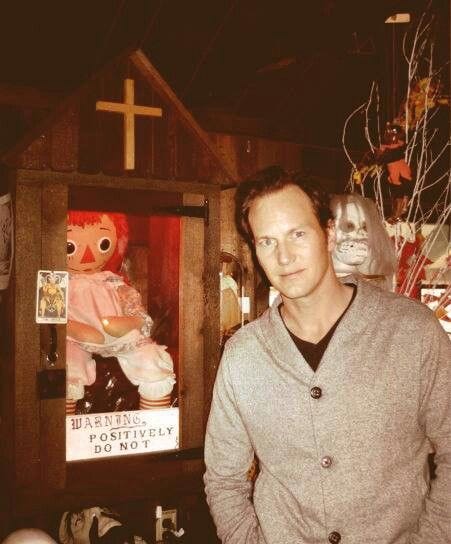
Yeah. That.
Point is, Raggedy-Ann feels like one of those American icons that’s just… been around forever, right? By God, she’s as American as apple pie, baseball, and Colt’s classic six-shooter. You’d be forgiven for thinking that Raggedy-Ann just kind of materialized as some sort of gestalt entity, forged by the collective consciousness of the American people once the last founding father finished penning his name on the Declaration, but, no - Raggedy-Ann was actually an invention of author John Gruelle, who patented the doll in 1915. Raggedy-Ann herself wouldn’t even officially debut until 1918 with the publication of a collection of short stories in which she starred, very creatively titled, Raggedy Ann’s Stories. This puts only a 41 year span between the birth of Raggedy Ann and the advent of Barbie. It also means that a girl of Samantha Parkington’s time predated Raggedy Ann, which is just… weird to me, because I feel like Raggedy Ann belongs in that time period more than any other.
But, this isn’t about Raggedy Ann. This isn’t about Lilli, either. This is about Barbie. More specifically - the merciless industrial machine, Big Barbie, that grew up around her.
And Big Barbie was not built on friendship, loyalty, honesty, or any of that hokey nonsense the toy-line likes to pander to children with. No - Barbie’s pink plastic empire is built on shattered dreams, interpersonal drama, and mountains of blood soaked cash. Whether it be the child laborers that fashion the dolls in foreign sweatshops or the men and women that engaged in mortal combat for the privilege of designing toys for Mattel, to list all the names that once belonged to the bones on which Big Barbie stands would take multiple articles and more research than I could do in a timely manner, but there are three of note that I’d like to discuss briefly to really give you a better image of the truth behind Big Barbie.
The first of these? Well, that would be none other than Lilli herself. As the old adage goes - it ain’t about who’s first. It’s about who’s better.
As stated above, in 1961, the German proprietors that owned the Lilli doll patent sued Mattel for infringement. After two years of law-fare, the case was settled out of court in 1963. But, Barbie wasn’t quite done with her predecessor yet. In 1964, perhaps as a slap across the face, perhaps to cut the legs out from underneath a potential competitor, Mattel would buy the patent for the Lilli doll. And, that would be that. Much to the disappointment of thousands of little European girls and German sex-perverts, Lilli would be promptly discontinued, leaving a newly created - and vacant - market for Barbie to conquer, unopposed.
There’s no shortage of literature on the subject and study of Barbie that claims that her release was revolutionary. I don’t disagree. But, the thing about revolutions is that they always eat their own. Despite leading Mattel’s Research and Development team through some of their biggest wins, and even serving as Vice President of the Company, in 1974, Jack Ryan would leave Mattel. Some say he left of his own accord, after relations between himself and Ruth Handler soured. There’s evidence and anecdotes to suggest that she came to loggerheads with the man and personally muscled him out of the company. Whatever the case may be, there was undeniably bad blood between the two. Mrs. Handler was always quite possessive of the claim that she and she alone created Barbie, but, more perniciously, once Ryan was out of the company, the residuals and royalties he was entitled to were halted.
Years of vicious legal warfare between Ryan and Mattel ensued. Already eccentric, the stress, along with an addiction to cocaine and alcohol that comes free with a sudden influx of immense wealth, began to wear down Ryan’s mental state, resulting in an episode in which he took one of his own daughters hostage and engaged in an armed stand-off with the LAPD and Los Angeles SWAT teams.
When I say that Barbie's Malibu Dreamhouse is built with blood money, I'm not exaggerating. After spending his fortune trying to reclaim lost riches from Mattel, toiling through what seemed to be ceaseless legal troubles, destitute and depressed, Jack Ryan shot himself in 1991.
Now, Mrs. Handler's defenders have alleged that it was due to Ryan's infamously eccentric lifestyle that the two fell out. His love for bizarre sexual escapades and substance abuse are well documented. Apparently, he had a penchant for wild parties and beautiful women. That castle house of his was equal parts a Malibu dream mansion of his own and a person playground of every debauched delight imaginable. It also had this, which, frankly, is funny as hell as I want one in my home.
So, yeah - the guy was no saint, sure. But…
Mrs. Handler would later launch a media blitz, in which she greatly downplayed Ryan’s contributions and failed to even mention that he was one of the only people who saw any promise in the Barbie concept. Supposedly, in her autobiography, Dream Doll, Ryan's name comes up only a handful of times. Regardless of how much he did or didn't influence certain aspects of the doll, it's fairly safe to say that, without his support, if nothing else, Barbie would have been just another pipe-dream that never materialized, and, maybe little girls would all be playing with Lilli dolls right now instead, and I think Mrs. Handler, regardless of her emotions pertaining to his raucous private life, owed him at least a small debt of gratitude.
But karma, as they say, is a bitch. Not even a year after Mr. Ryan’s ousting, both Handlers would follow him out the door in 1975, after Ruth in particular was targeted for having falsified financial documents for the company, among a litany of other white-collar charges. Her steadfast refusal to admit guilt and stubborn resistance only earned her what is claimed to be the single largest community service charge of 2,500 hours of community services. Better than the alternative, which was 41 years in prison. Apparently, the judge told Mrs. Handler that her actions were, “exploitive, parasitic, and disgraceful to anything in society.”
Do not weep for Mrs. Handler, though - ultimately, she was fine. At the time, she was already running another company - a prosthetic breast company called… Nearly Me. Which - you know I gotta do it.
In fact, she started the company after suffering from breast cancer, which resulted in a double mastectomies. Her struggles with the illness is what she ended up blaming for her little whoopsie with the books - she was unfocused, y’know (her words, not mine), which, yeah. To be fair, cancer will do that to you.
Mrs. Handler collected royalties off Barbie for the rest of her life. Combined with her income from Literally Me Nearly Me, she died a wealthy woman. She passed from complications following a colon cancer operation at the age of 85, in 2002, with a reported net worth of $100 million. Elliot Handler would follow her in 2011 at 95 years old.
Even though neither Ruth nor Elliot met as grisly an end as Ryan, I still have to think that being forcibly ousted from the company you built from a humble picture frame company to the largest, most innovative toy manufacturer on Earth, could not have been anything other than humiliating and devastating. It’s also worth noting that Mrs. Handler’s legacy is a stained one. Apparently, she was not the easiest woman to work with, and had a bit of a habit of taking credit where it was due to others - or so others are quick to claim. Over the year, Jack Ryan’s children have continued to cast aspersions against her lop-sided re-telling of the Barbie creation myth, and have recently taken to the media to ensure their father’s side of the story is told. Whether they are motivated by filial piety or a desire to secure the royalties that would have been entitled to them after inheriting his estate, only they can say, but their efforts resulted in the inclusion of Ruth Handler in 2023’s Barbie movie - played by Rhea Perlman - was about as controversial as a glorified cameo could be.
The history of Barbie is long, sordid, and fraught with inter-corporate conflict and lawfare. The Woman in Pink has been the center of more lawsuits than I could or want to document here. Even after the Handlers depart from the stage, the story continues, and, frankly, it’s interesting and deserves a deeper look, as does Mattel as a whole, which, when it comes to skeevy companies, is infamous for being… well, skeevy. Notoriously protective of their IP’s, Mattel has lodged just as many cases as have been lodged against them, if not more. In my research on Mattel, Barbie, and other properties, fans have made numerous comments about how litigious the company is, with videos on YouTube regularly being struck for copyright infringement, regardless of what’s being said about the brands.
A notable example among toy collectors and paleontology fans alike was a mass deletion campaign that Mattel waged on fans of the Jurassic Park franchise - the toys to which Mattel has the license for - against individuals reviewing Jurassic Park toys5, as well as people just… making videos about dinosaurs. Because, by virtue of possessing the license to make Jurassic Park toys, Mattel has the de facto copyright over all likenesses of all dinosaurs ever, I suppose.6
Infamously, however, the company sued MCA Records over a certain song by a certain Danish euro-pop band.
I don’t even need to say it, do I?
Yeah - you’re gonna be hearing this for the next few days. You’re welcome.
Now, you may be surprised to hear this, but the story behind Aqua and their one big hit and what’s quite possibly the most inescapable earworm ever put to vinyl is, again, worthy of a deep-dive unto itself, but let’s just say… fuck, I love this. Disregarding the singer’s obnoxious voice and questionable, vapid lyrics, god damn is it catchy. That first beat drop? Masterful. More importantly, it’s tightly constructed, nearly perfect in it’s composition, without a single note or second wasted. There’s a reason you heard it in your head the moment you saw it.
Besides just profaning the sacred name of Barbie without Mattel’s express and explicit permission, the heart of the matter came from offense taken over one particular line - I’m a blonde bimbo girl, in a fantasy world.
Mattel did not like that.
In fact, in 1997, Mattel was already in hot water - and not a delightful soak in the pimped out mega-jacuzzi on the deck of Barbie’s Malibu Dreamhouse - over Teen Talk Barbie.
The doll, following in the footsteps of Mattel’s own Chatty Cathy, had a voice box that would spit out one of a whopping 270 phrases at random. Again - a parent’s worst nightmare. Well, one of these phrases that Barbie would say got some hackles up. Y’see, if you pressed Barbie’s back, she’d really talk! Wonders never cease. She’d say things like, “Will we ever have enough clothes?”
Haha! No, Barbie - no, we I suppose we won’t, will we?
“Let’s plan our dream wedding!”
Oh! Barbara, I… I appreciate the sentiment, but - well, let’s just say… I’m not that type of girl.
“Wanna have a pizza party?”
Barbie. C’mon. Does a bear shit in the woods?
“Math class is tough!”
Well, you know what, Barbie? You’re right. I always struggled with math. Always have. Still do.
But, apparently, Barbie stating this simple fact of life - that some people just don’t get math - was enough to get the National Council of Teachers of Mathematics to pitch a fucking hissy fit. Yeah - no surprise a bunch of joyless losers that literally make a living antagonizing children with hypotenuses and quadratic formulas and all that junk got mad because Barbie had something to say about their bullshit. Bunch of fucking nerds. I imagine this is what they looked like:
The American Association of University Women, which I assume was also a coalition of unseemly wenches that got no hunks and stacked no paper, also had something to say about it, and criticized the doll for being demeaning and playing into harmful stereotypes about women being dumb and only caring about shopping and shoes and whatever. As if you have to be dumb to hate math. And, if you remember this from the Simpsons, back when it was worth watching:
That was a direct joke at Barbie’s expense over the whole debacle.
Well, they say bad attention is better than no attention, but Mattel don’t play by them rules. They play by their own, which comes in a book thicker than two copies of War and Peace and is twice as wide. The text is written in size 9 font, too. Mattel quickly withdrew Teen Talk Barbie, removed the offending piece of dialogue from future iterations of the doll, and even offered to refund customers that wanted to exchange Barbie who hated math with a Barbie who didn’t.
Barbie had always had a degree of classic feminist empowerment to her. One of Ruth Handler’s original ideas for the doll was to make one that could play multiple roles and play various parts in a child’s story, since baby dolls were always gonna be… well, babies, and Raggedy-Ann was always gonna be Raggedy-Ann. Barbie could be anything. Barbie could do anything. Barbie could go to space.
Barbie could pull your fat-ass out of a burning building, and look fabulous while she did it.
Barbie and Ken both could overthrow a democratically elected regime for the oil industry in the third world… I mean, liberate a third world country from the iron-grip of a tin horn dictator.
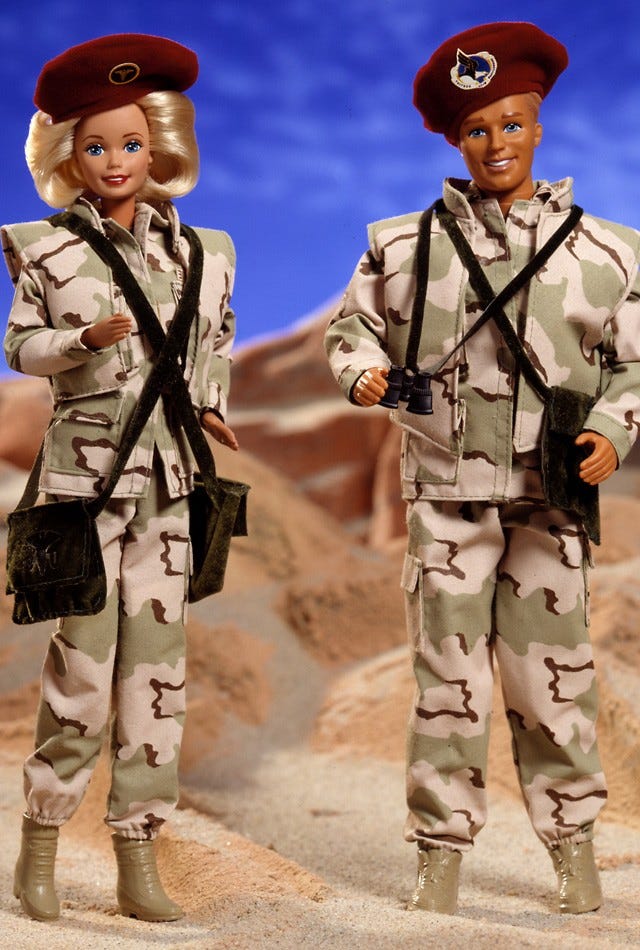
But if Barbie was not anything? She was not. A fucking. Bimbo.
And Mattel were willing to take a group of ecstasy-addled Danish ravers to court to prove how adamant about that they were. Which is ironic, considering the direction that things would soon go.
The thing is, Barbie has always been popular. But not always the most popular. The popularity of the Barbie brand ebbs and flows with the reliability of the times. Like a legacy sports franchise, she has periods where she appears virtually invincible, only to lapse into a season where she’s everyone else’s punching bag. But… but… she always comes back. She usually falls out of favor for not being with the times. She’s not hip. She’s not with it. And what is hip and with it seems silly when she tries to jump on the bandwagon - Barbie is a lot like the prototypical mother, in that sense. But, unlike most moms, Barbie always draws back… reformulates… figures out how to get with it, and once she does? Oh, she comes back with a vengeance. Looking at the history of the toy, it’s fascinating to see the brand’s constant rising and falling, decline and ascendancy, breakdown and re-imagining. It is as reliable as the rising and setting of the celestial bodies, and as inescapable as the cycle of Samsara.
Barbie is nothing if not resilient.
Currently, Barbie is on a big winning streak; her recent billion-dollar big screen outing has ignited a nostalgia-fueled resurgence of her name in pop culture. Given the ubiquity of Barbie in the cultural zeitgeist, even at her lowest, where, if nothing else, she existed as the butt of a joke, it may be hard to remember one of these rebuilding seasons in the long and storied history of the brand. But, there have been many, and the brands that stepped up to make a run for the throne were many.
And these competitors… well, they tend to be absorbed into the patch-work Empire of Big Barbie. American Girl, as we discussed, was one such competitor, though, given the line’s immense differences from that of Barbie, I think they more fell afoul of the Pink Lady’s sensibilities rather than make a direct challenge to her market dominance. British toy company Bluebird Toys’ pint-sized Polly Pocket line was another. For a while, even Disney’s in-house line of dolls modeled after their murderer’s row of princess figures stepped up to the plate. All would make admirable stabs for the top - all would be acquired by Mattel, forced to bend the knee, and kiss the ring.
The only real exception to this pattern is the line of fashion dolls known as Bratz, which always marketed itself as a more edgy, street-savvy, and mature alternative to Barbie.
I know I’m not the target demographic for, like, any of these toys - except for Bild Lilli, apparently - but, I have to say, I really don’t get why these big-lipped, doe-eyed freaks with their massive clown shoes became the hit that they did. But, in the early 2000’s, these things gave Barbie a serious run for her money. Even though they still maintain a brand presence today and churn out new dolls year after year, if you want to know how serious their threat to Barbie is these days is… well, did you hear about a billion-dollar Bratz movie? Yeah - me neither. Even then, I think the only reason that Bratz hasn’t become yet another vassal state of Barbie’s empire is because the company behind them - MGA Entertainment - has just about no other heavy-hitting IP in their catalogue to rely on, and without this gaggle of mutants in their bull-pen, the entire company would fold. Again - you ever heard of Glitter Baybeez? Yeah. Me neither.
But… what happens when the competition comes from inside the House that Barbie Built?
Even inside her own fortress, well-within friendly territory, snuggled securely in the pink, plush heart of her own Empire, beneath the shadow of a Mattel-branded flag, when Barbie recedes and steps away from her cultural pedestal, a gaping, sucking, howling vacuum remains in her wake - a void, an absence in the collective culture, if you will. And sometimes, when those gaps are opened… monsters slip through.
But that, I’m afraid, will have to wait until next time…
Who’s name sounds like the protagonist of some kind of whimsical children’s story or Victorian-era poem.
Do not ask me to pronounce that.
Which I assume is the Hungarian equivalent of Jessica. Maybe?
Weird as it is, it’s actually a great piece of animation and well worth a watch.
Which, apparently, has quite the sizeable and dedicated following.
It makes sense when you consider that dinosaurs are a hoax… but y’all ain’t ready for that discussion.






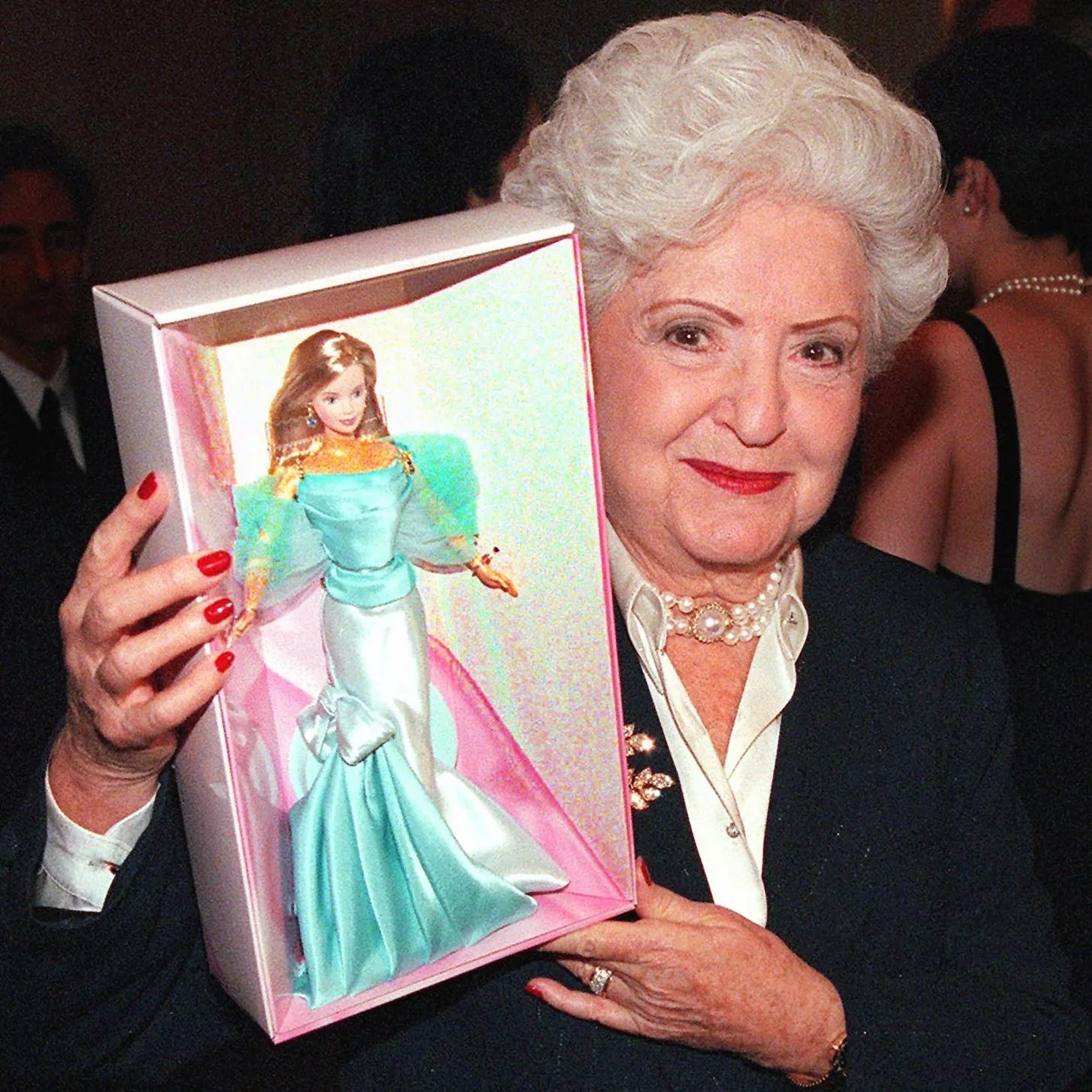



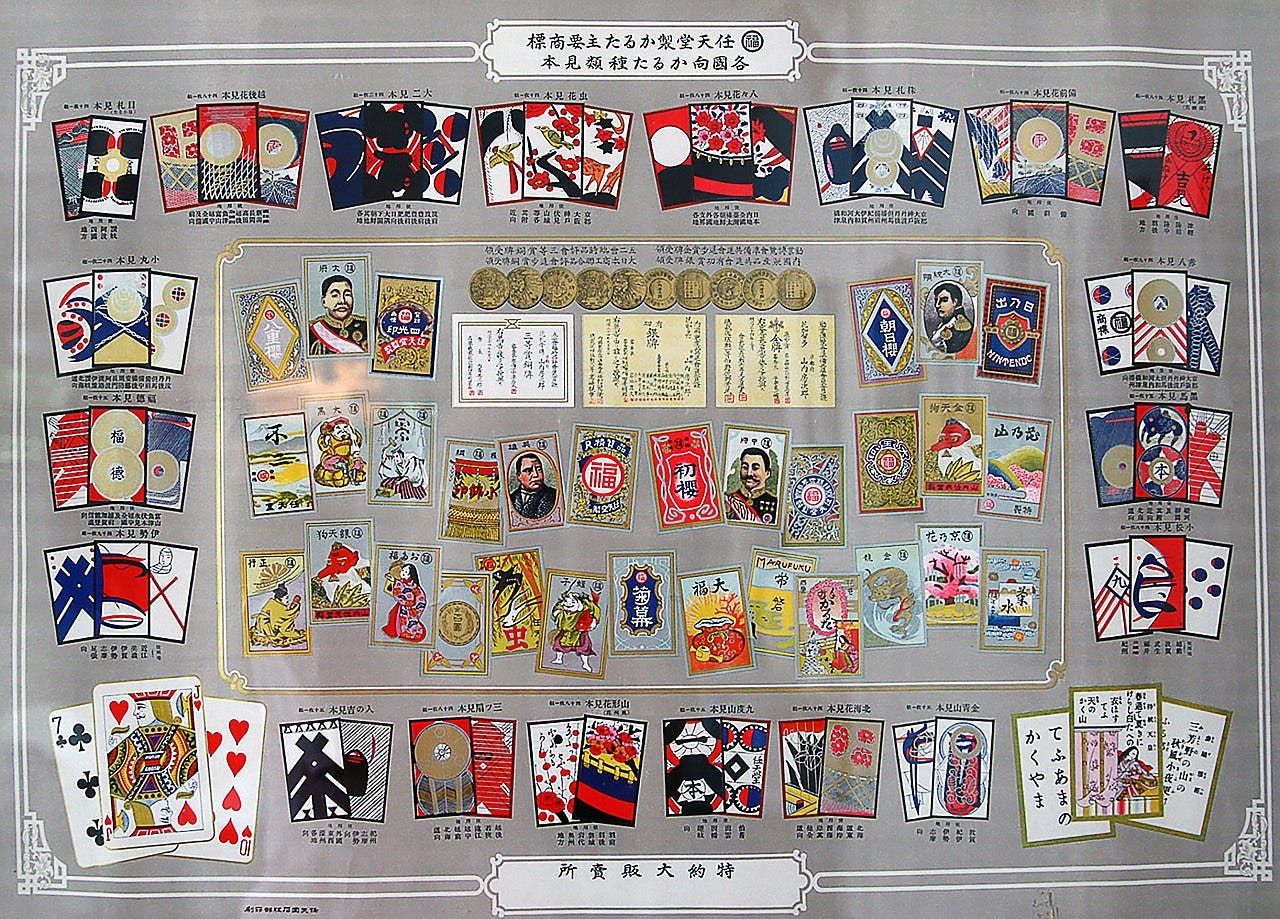


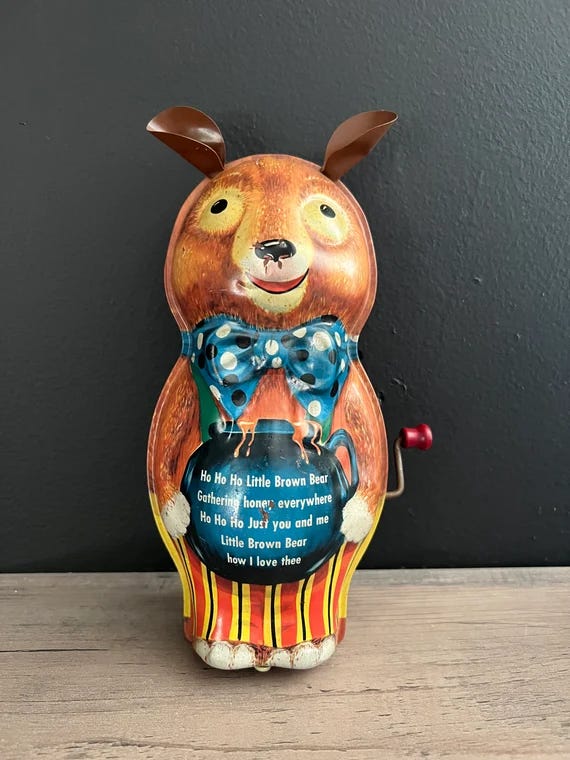
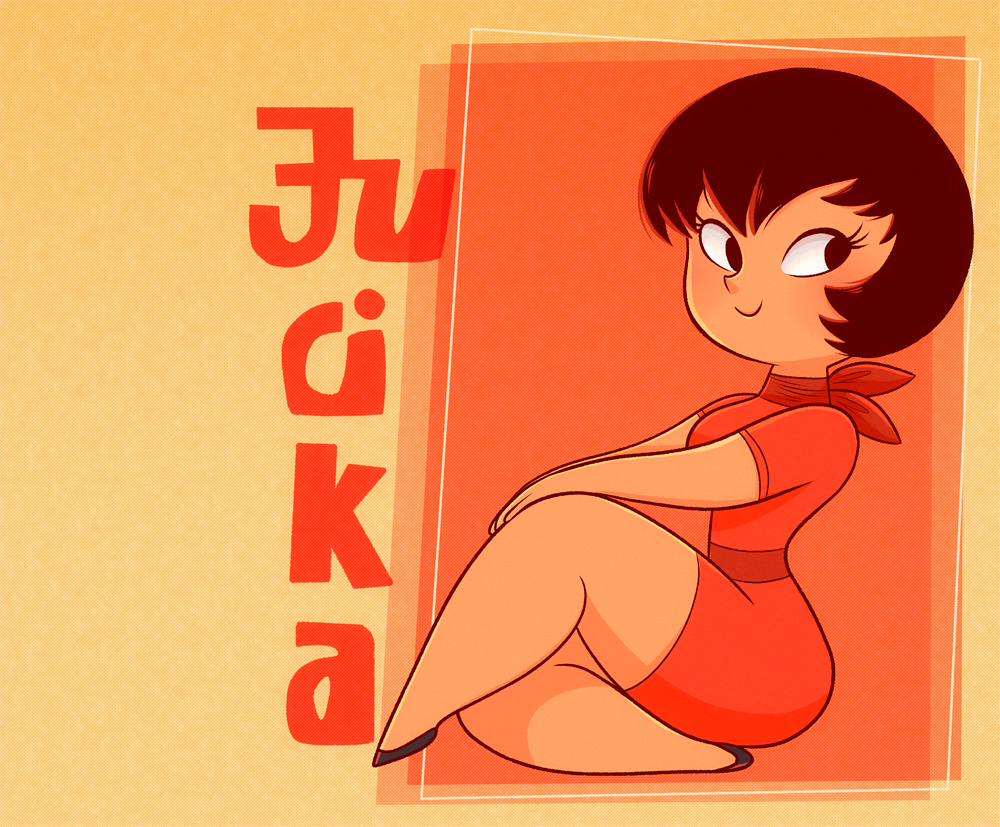

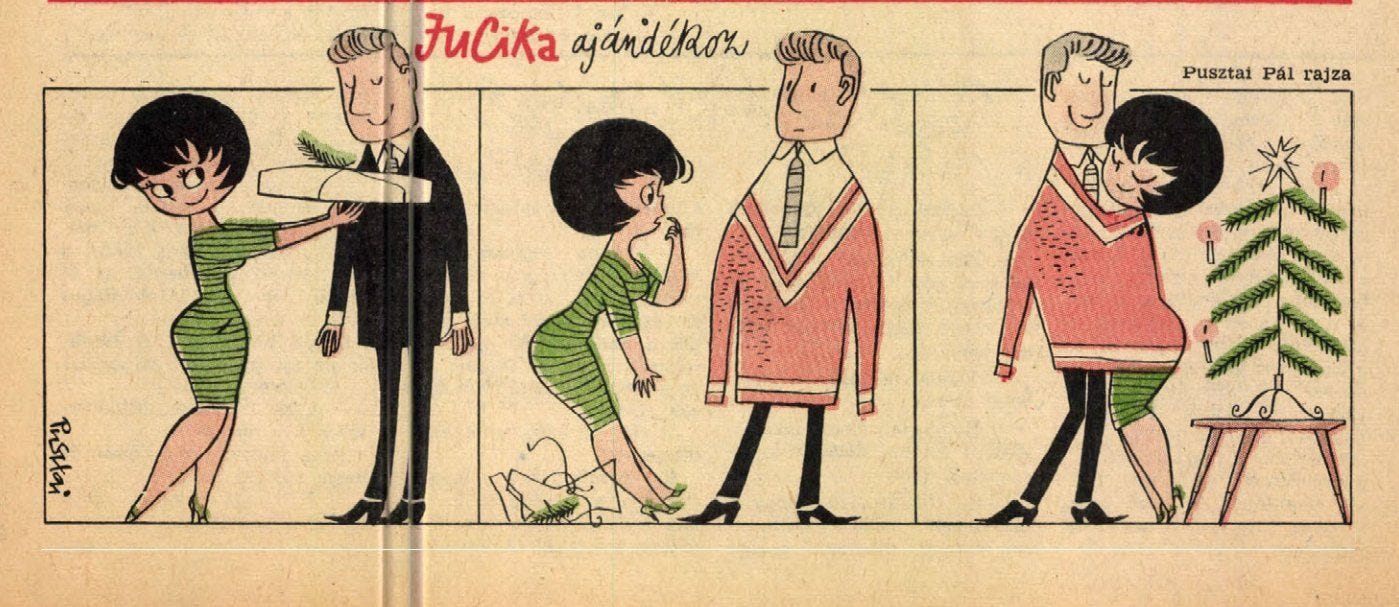
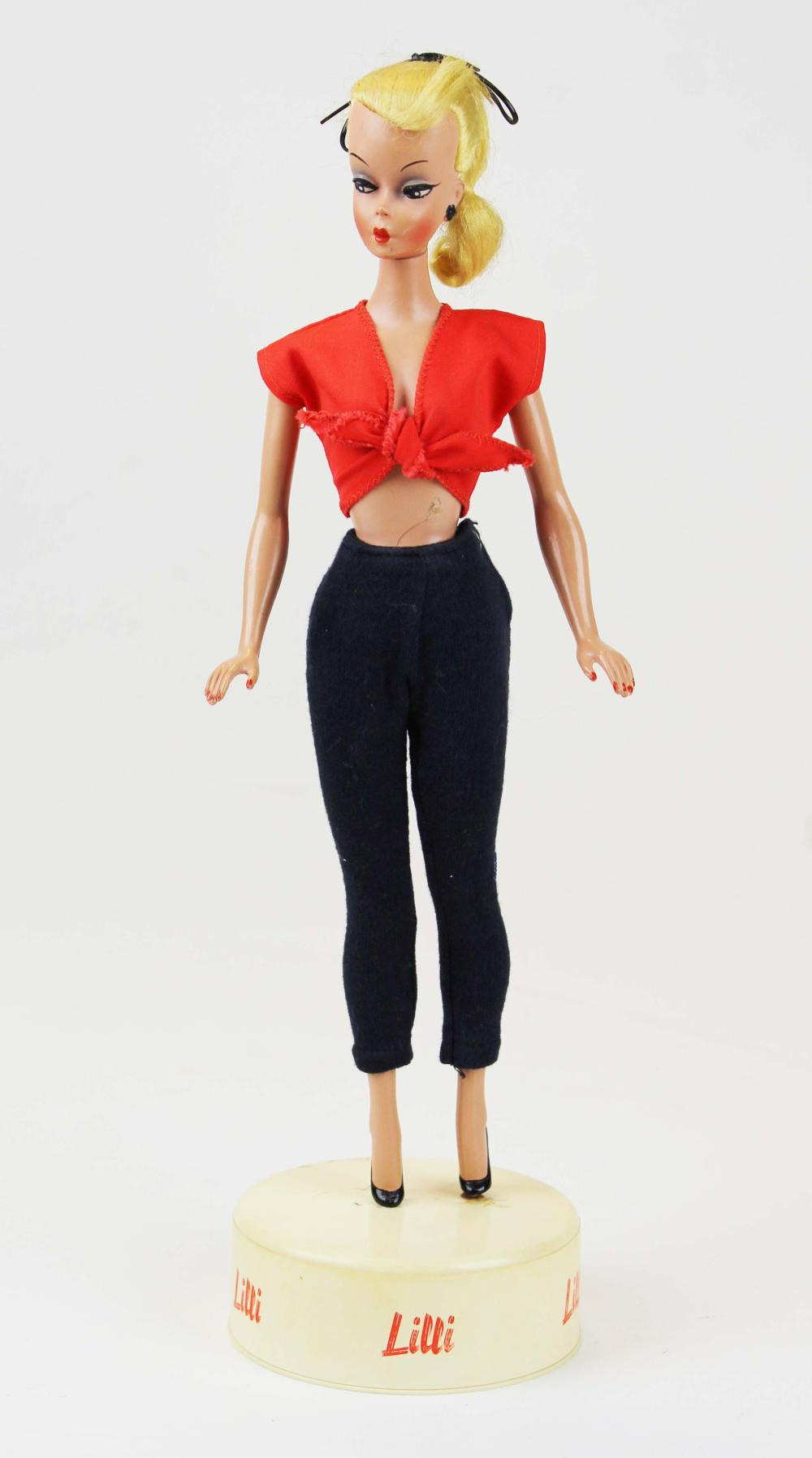
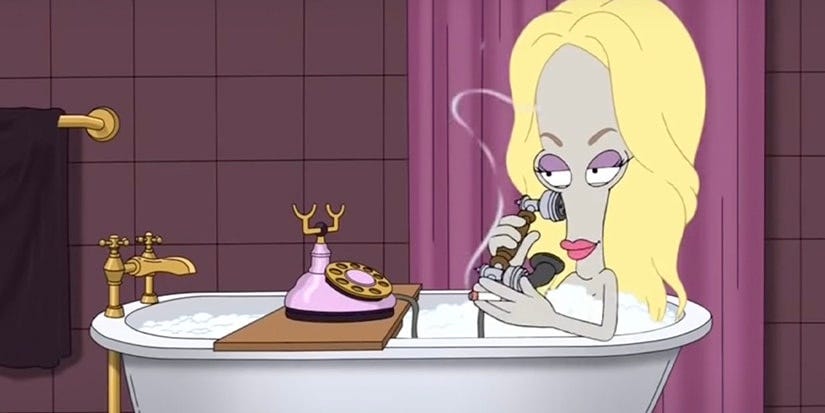



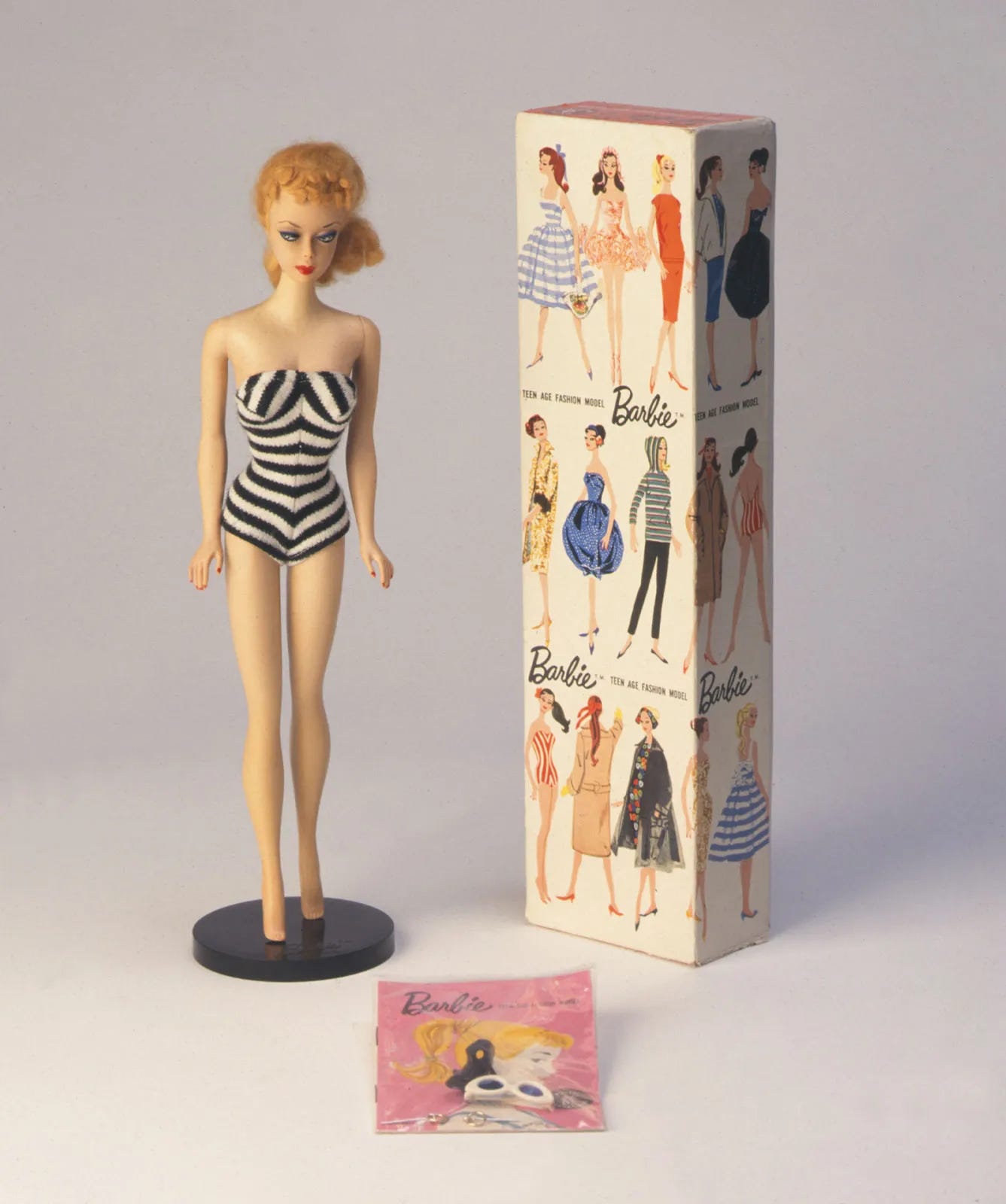

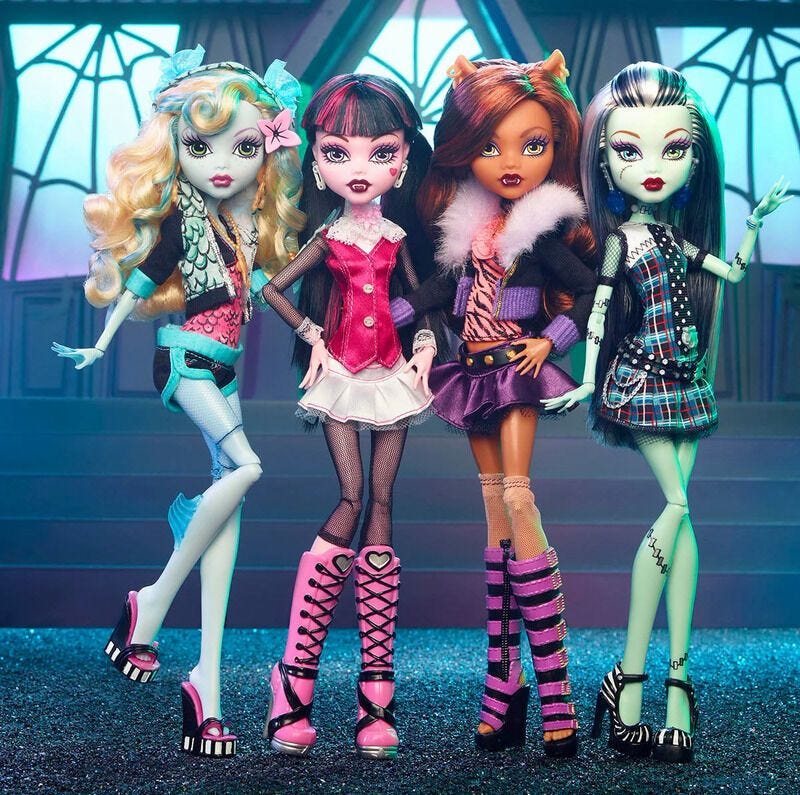


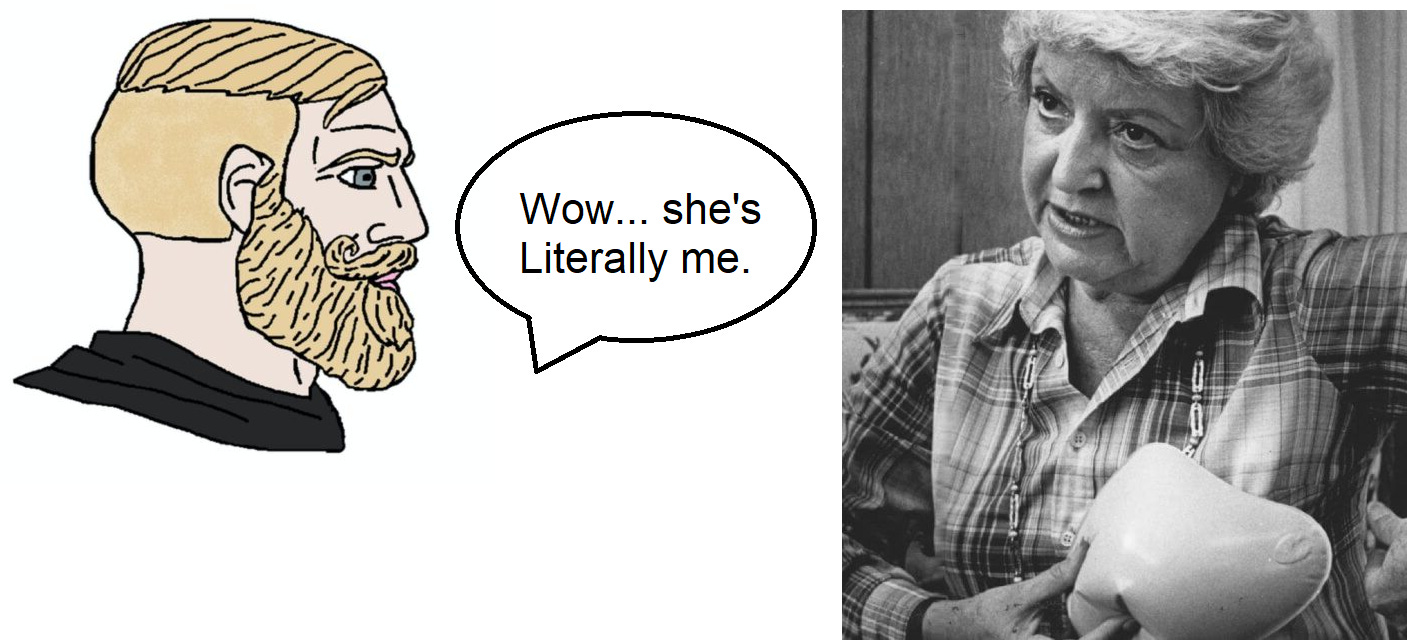
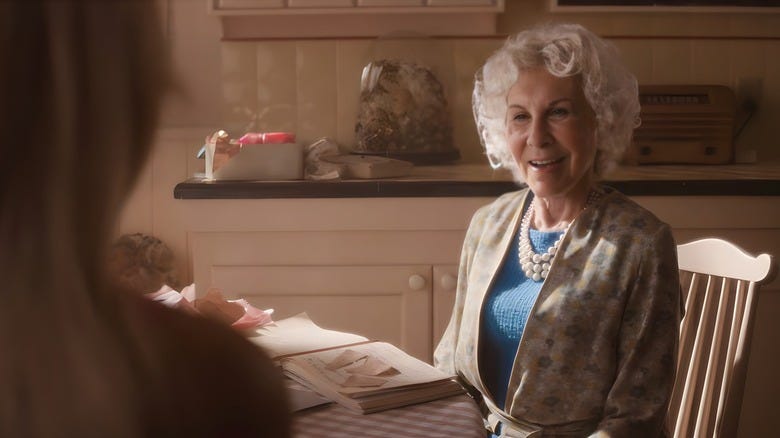
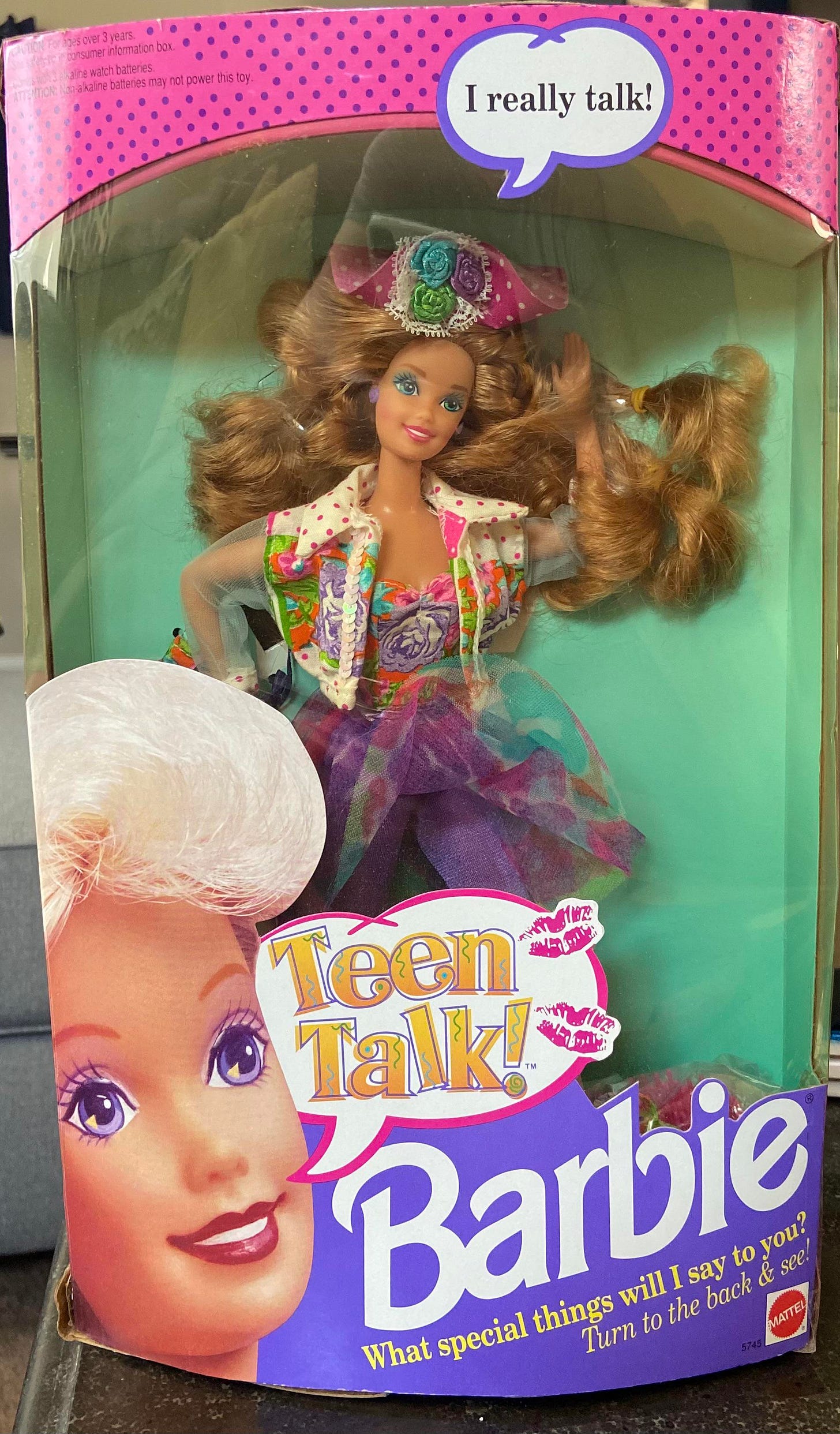


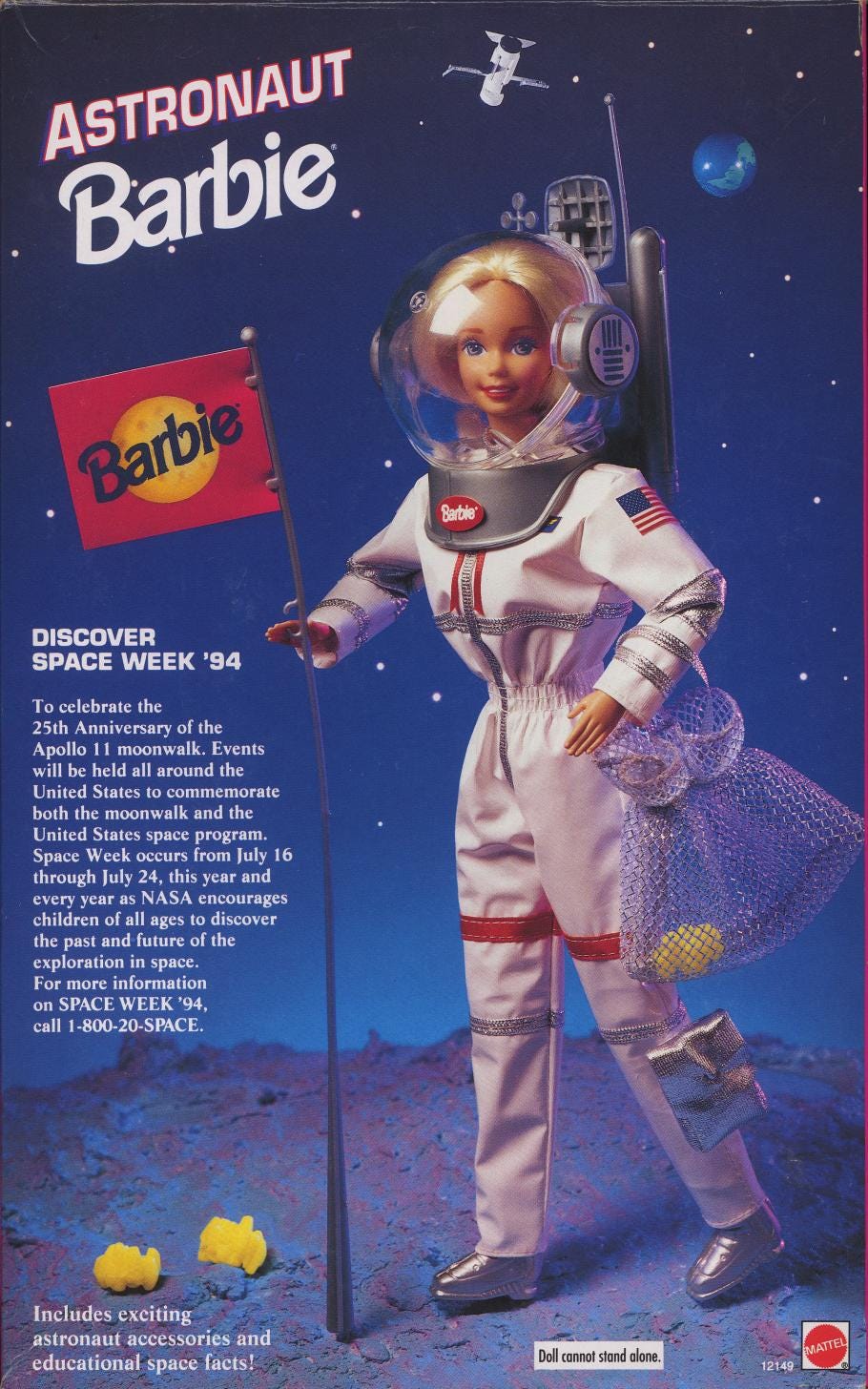
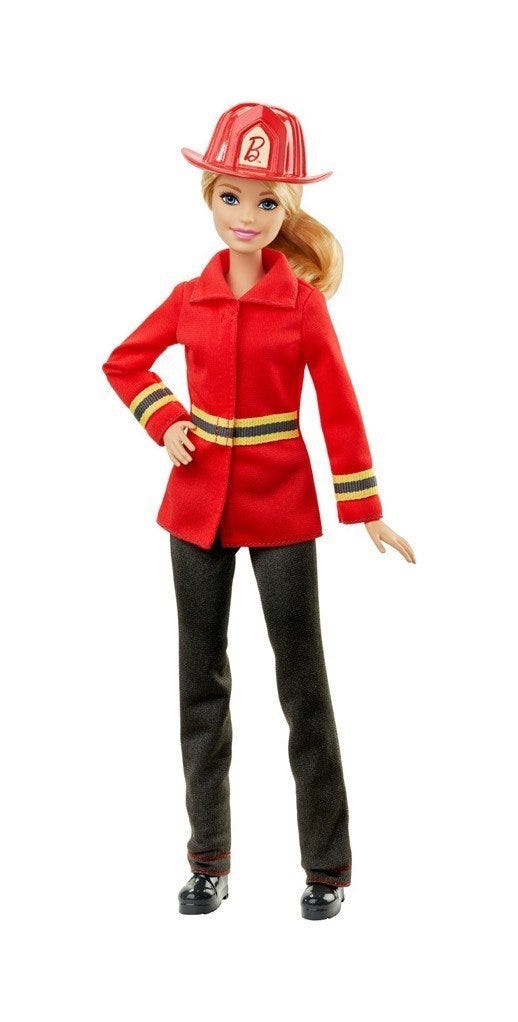

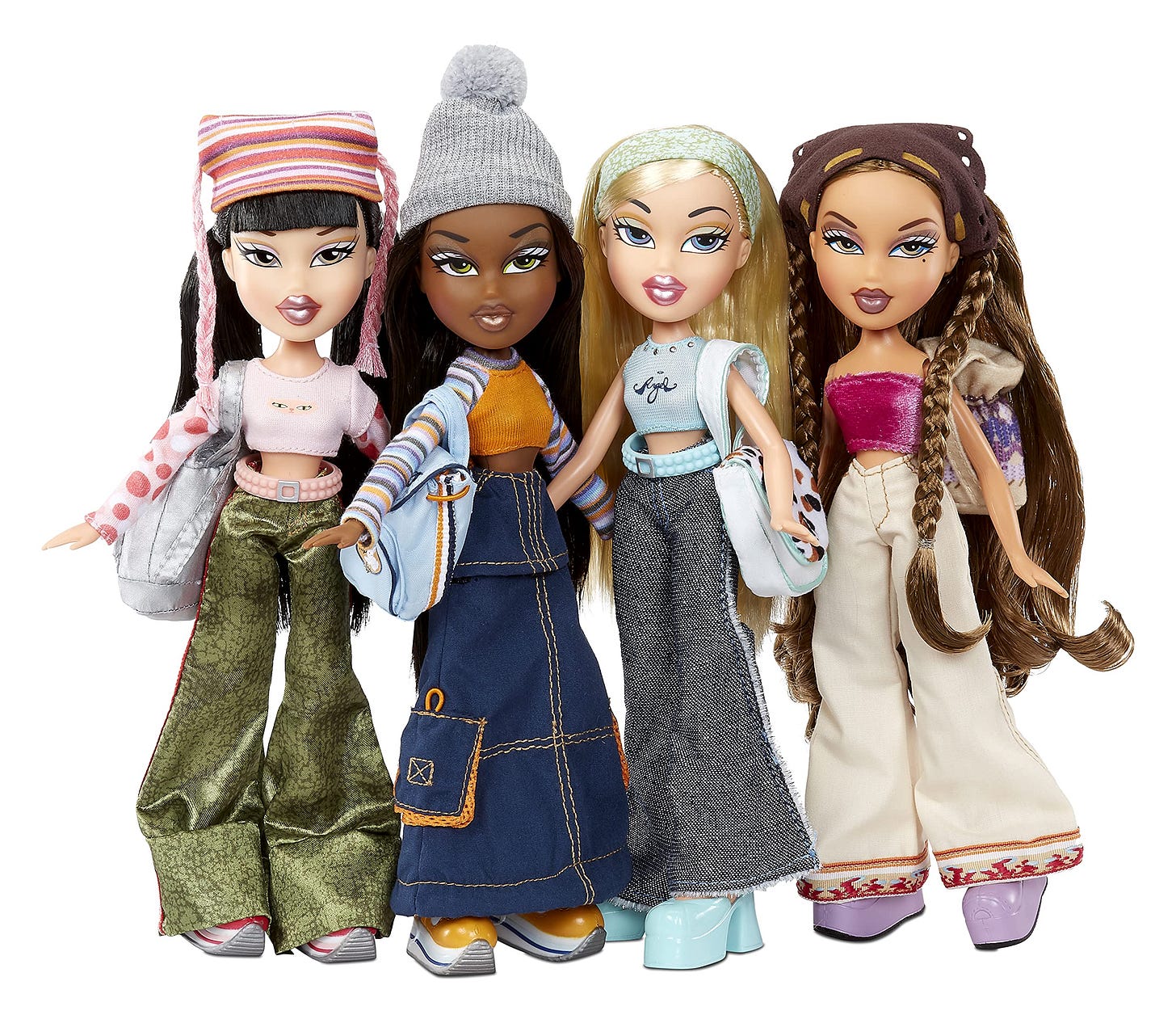
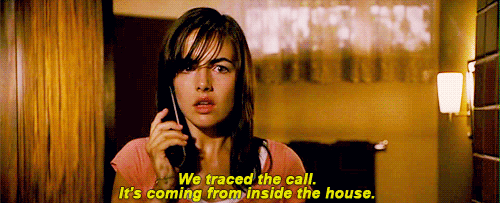
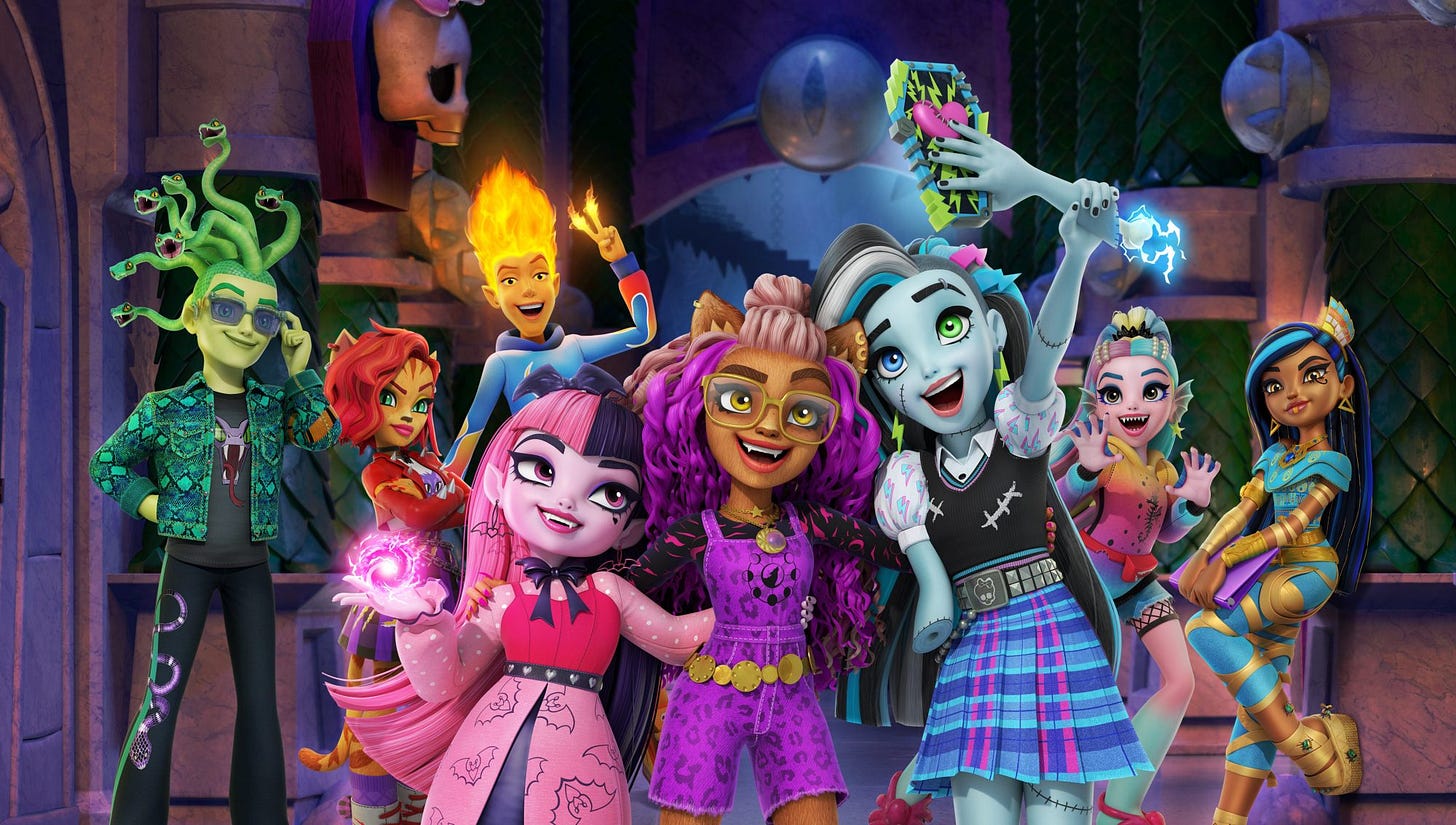
German toy designer 1: *Takes a drag from a cigarette clamped between thumb and pinkie finger.* "Okay but vhat if her head was like 54 centimenters tall? Zat vould be just ze hottest sing ever, ja?"
German toy designer 2: "MEIN GOTT."
Fascinating deep dive, very well written, and a thoroughly enjoyable read. I never got into the American girl dolls, but this history lesson makes me shudder a little nonetheless.